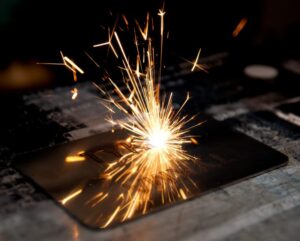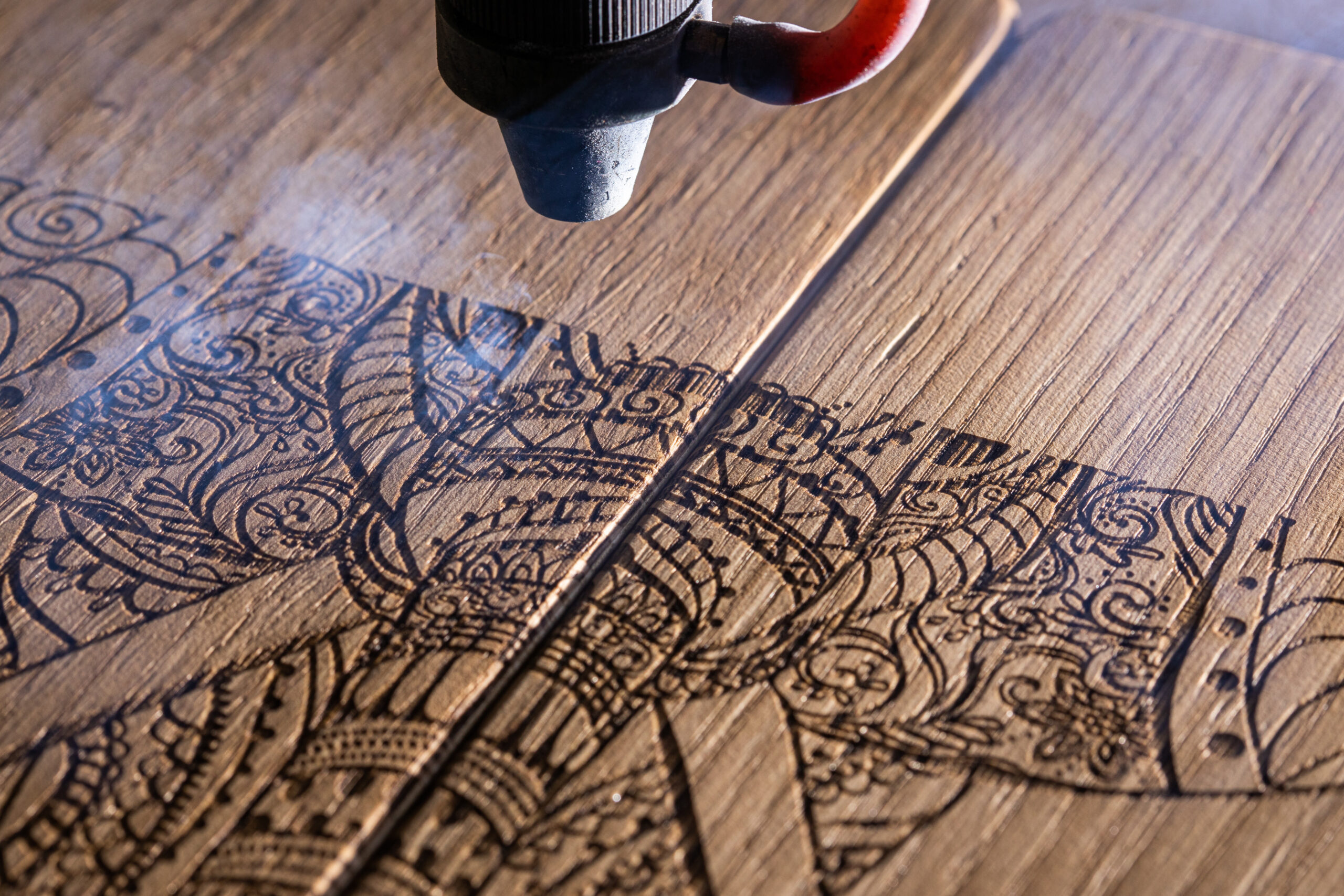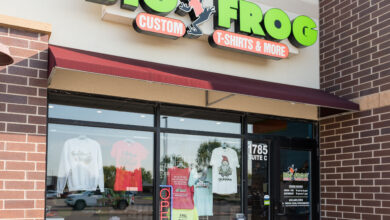Laser engraving has been utilized by dozens of industries for diverse products, but one application that may often be overlooked is engraving home decor to enhance and beautify pieces, as well as provide traceability opportunities. Everyone from large manufacturing facilities to small shops to hobbyists can use laser engraving to their advantage when working with furniture, mementos, artwork, and more, so let’s take a look at the possibilities.
Materials ideal for laser engraving
One of the best parts about considering laser engraving decor is the wide variety of applicable materials available. Whether you are working with metal patio furniture in need of a fresh look or wooden accent pieces requiring branding information, you’ll be able to achieve the markings you’re looking for.
For standard, high-powered laser engraving systems, applicable materials include:

- Various grades of steel
- Stainless steel
- Titanium
- Aluminum
- Anodized aluminum
- Brass and copper
- Nickel-plated materials
- Galvanized materials
- Painted and coated materials
- Black oxide
- Carbide
- PCD
- ABS plastic
- Polyethylene plastic
- Glass-filled plastic
- Various other plastics
Beyond these possibilities, other materials are able to be marked with lower-powered CO2 lasers, including gold, silver, textiles, wood, glass, and leather, truly opening up the opportunities for laser engraving. This makes it so virtually any type of home decor is a strong candidate for the procedure.
Applications for laser engraving home decor
Considering all the materials available for engraving home decor, the list of applications is nearly endless, though some possibilities often seen include:
 Chairs
Chairs- Dining tables
- Coffee tables
- End tables
- Trunks
- Picture frames
- Glass figurines
- Sculptures
- Lamps
- Bookcases
- Media centers
- Trash cans
But what exactly gets engraved on these items? Depending on the needs of the company engraving or those of the eventual customer, engravings can be supplied to fulfill a range of roles. Common uses include the following:
- Incorporating traceability information — such as barcodes, serial numbers, data codes, time stamps, dates, and individual part numbers — can be essential for tracking parts and products, or for assisting with later assembly by a consumer
- Branding information is often displayed through laser engraving, making product names or company logos pop out prominently
- Designs — whether simple shapes, complex imagery, or even full reproductions of artwork or photographs — are often incorporated into decor as an aesthetic choice
- Personalization is another key option, especially when it comes to gifts, since names, dates, family mottos, meaningful messages, and more can all be included into products to make them extra special
- Artist signatures can also be fully replicated via the computerized systems used by laser engraving, ensuring the authenticity of a piece
Who can benefit?
Laser engraving is fast, precise, and repeatable, and these factors, along with engraving’s versatility, means operators often prefer it over other marking methodologies.
While large manufacturing plants will often engage in the practice, they are not alone, as small shops and even advanced hobbyists can incorporate laser engraving into their operations, since some laser units are small enough to fit easily on desktop workstations. This means that mass-produced items can incorporate all the engravings mentioned above if desired, but that smaller outfits can also benefit by offering personalization services to their clientele.
Due to the costs involved with purchasing a laser engraver, the average consumer, however, would not be an ideal candidate. That does not mean, though, that such individuals cannot benefit, as they can receive personalized items, ensure they are obtaining authentic products, and profit from the quality control that traceability provides.

 Chairs
Chairs


